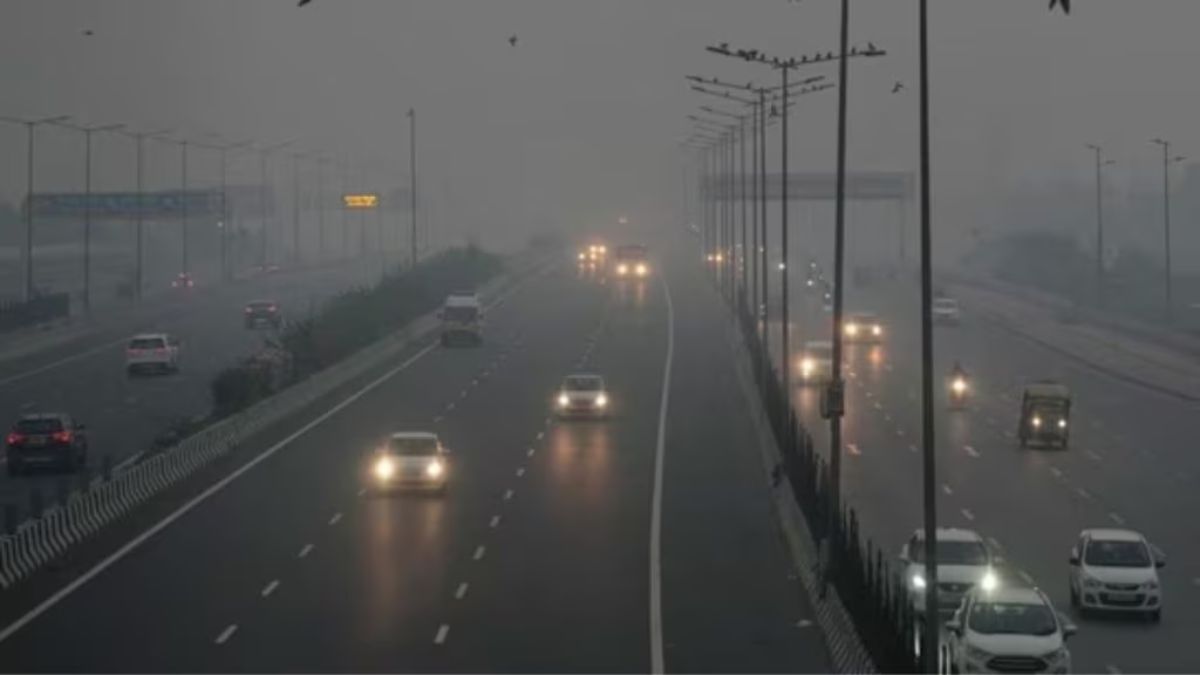As Diwali fireworks lit up India’s skies, a thick haze began drifting across the border, and soon, Pakistan was gasping for air too.
By Tuesday morning, Lahore’s Air Quality Index (AQI) had climbed to 266, second only to New Delhi, where several stations recorded levels above 300. Pakistani officials have blamed smoke from India, saying low wind speeds have trapped pollutants and pushed them westward, Dawn reported.
Delhi, meanwhile, was the world’s most polluted capital on Wednesday, with an AQI of 442, air so toxic that its PM2.5 levels were nearly 60 times higher than what the World Health Organization considers safe.
Here’s how Delhi’s cross-border pollution is impacting Pakistan.
Pakistan is gasping for air
Officials in Pakistan have said that the heavy smog is caused by a mix of local pollution and smoke drifting in from India after the Diwali celebrations, Dawn reported.
“Winds carrying pollutants from New Delhi and other northern Indian cities contributed significantly to worsening air conditions in Pakistan’s Punjab,” added the Punjab Environment Protection Department.
With wind speeds barely reaching 4–7 km/h, fine particles made their way across the border, spreading to cities like Faisalabad, Gujranwala, Sahiwal, and Multan.
According to the Environmental Protection Agency, Lahore’s AQI reached 332 on Monday morning, while Faisalabad’s AQI stood at 325, Sheikhupura at 311, Dera Ghazi Khan at 239, Gujranwala at 233, and Multan at 224.
On Monday, Lahore was ranked the third most polluted city in the world, behind Kolkata and New Delhi. By Tuesday, it climbed to second place. Swiss air monitoring firm IQAir reported PM2.5 levels in Lahore at 187 µg/m³, nearly 37 times higher than the World Health Organization’s safe limit.
But it is not just Diwali firecrackers causing the smog. Lahore has historically struggled with poor air quality during winter, with last year around the same time recording an AQI of 394. Crop residue burning and industrial emissions had already draped the city in a thick blanket of smog.
How Pakistan is battling pollution
To tackle the rising smog levels, the Punjab government in Pakistan has activated emergency measures, including the use of anti-smog guns and water sprinkling on key roads in Lahore.
At least nine departments have been involved in these operations. The provincial government, led by Maryam Nawaz, has also set up smog response squads to raid establishments and individuals allegedly contributing to air pollution.
Marriyum Aurangzeb, a minister in Nawaz’s Cabinet, described the situation as a “cross-border environmental challenge”, urging citizens to reduce local emissions while authorities monitor pollution coming from India.
“Winds coming from Amritsar, Ludhiana, and Haryana will bring pollution into the air. Lahore’s AQI is expected to remain between 210 and 230,” she wrote on X.
She added that construction materials in open areas would be covered, traffic on key routes would be restricted, and vehicles emitting smoke would be fined or seized.
Meanwhile, Lahore Police arrested 83 people as part of the anti-smog crackdown, including factory operators and others accused of burning tyres and waste.
Delhi wrapped in a smog blanket
Delhi too was engulfed in toxic air, with the AQI worsening across most parts of the capital. Data shows that average PM2.5 levels reached 488 micrograms per cubic metre, nearly 100 times the safe exposure limit set by the World Health Organisation.
Despite a court order limiting fireworks to “green crackers,” compliance was minimal.
A report by The Times of India found that certified green crackers were available only in limited quantities in main markets, while banned conventional crackers were being sold openly and cheaply, often disguised with green labels and fake QR codes.
The Supreme Court had mandated that firecracker use be restricted to 6-7 am and 8-10 pm, but in Delhi, celebrations went on well past midnight, with very little enforcement.
Slower wind speeds at this time of year prevent pollutants from dispersing, keeping toxic particles close to the ground. Combined with seasonal stubble burning in Punjab, Haryana, and nearby regions, Delhi’s air becomes a hazardous mix of smoke, dust, and vehicle emissions.
The impact was clear: the capital’s air quality plummeted into the ‘very poor’ and ‘severe’ categories, with 34 out of 38 monitoring stations reporting levels in the red zone, making breathing unsafe for residents.
With input from agencies


)

)
)
)
)
)
)
)
)



